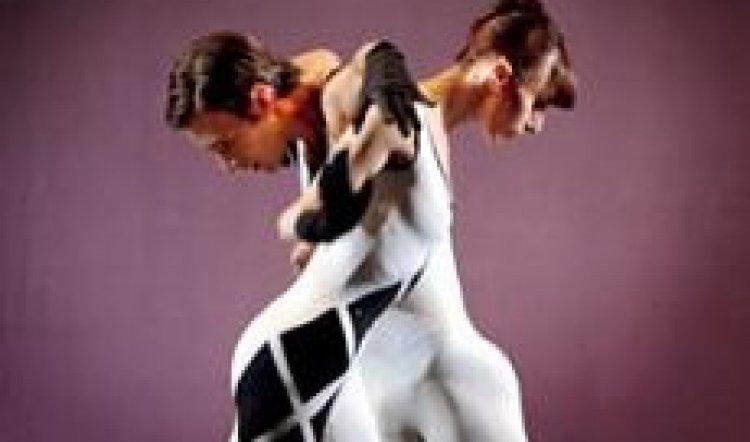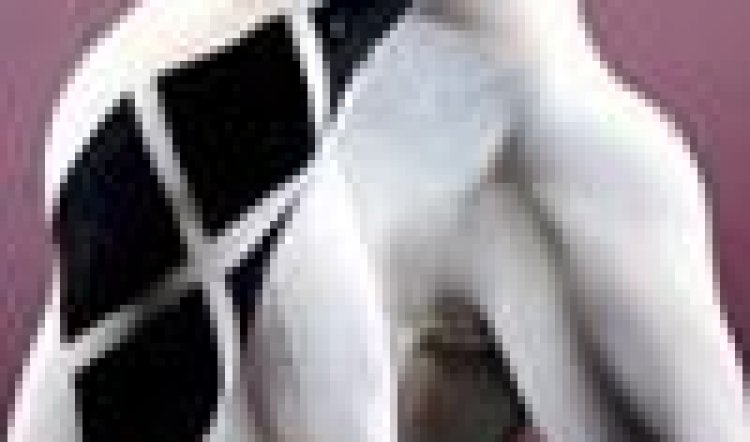
SYDNEY FESTIVAL/MORPHOSES
Morphoses, the Wheeldon Compnay Theatre Royal, January 22-February 1, 2009; www.sydneyfestival.org.au or Ticketek 1300 888 412
Christopher Wheeldon does sort of look like the Messiah if your idea of the Man is a modestly presented fellow in baggy white pants, a loose overshirt, bare feet and thongs. The English choreographer – the saviour of classical ballet, according to rapturous word from Europe and the US – made his debut in Australia with his “company” (a loose agglomeration of dancers that comes and goes depending what he’s up to) at the Sydney Festival this week, and he seemed as unlikely as the first Messiah.
It is his habit to introduce the work and himself through a short, explanatory chat to the audience from a corner of the stage. This has been described, apparently, as arrogant but actually came over as friendly, inclusive and generous. In the week of the inauguration of President Barack Obama he was also visibly chuffed to be able to tell us that the costumes for the work (Commedia) we were about to see had been designed by First Lady Michelle’s choice, Isabel Toledo. So far, so up to the minute.
If any art form needs to be saved from itself right now it has to be everyday classical ballet which is, being generous for a moment, petrified, moribund and irrelevant. And from the opening moments of Commedia, right through the two-part program of long and short works (two of each) to the climactic image of a construction of dancers, as seen on the posters around the city, it is obvious that Wheeldon’s approach to dance is unique and thrilling.
Ironically, the Toledo costumes for the first work – an homage to the Ballet Russes, Diaghilev and Stravinsky (the Pulcinella Suite) – are so vivid and eye-catching they don’t work as well for the dance as the minimal monotonal body suits of the later pieces. It’s impossible not to be drawn to the colours, varied styles of capes, jackets, cloaks and accessories (long gloves, short gloves) and asymmetrical shapes and so, lose track of what the bodies are doing.
This becomes immediately apparent in the short duet – Slingerland Pas de Deux – that follows when, under a simple, harsh lighting arrangement, two dancers (Cast A and Cast B depending on your night) are distilled by choreogarpher William Forsythe into the essence of classical and contemporary movement.
After the interval another short work, Distant Cries by Edwaard Liang, is the emotional highlight of the evening as two dancers (Australian Lucinda Dunn in Cast A) rise through the warm serenity of music by Albinoni. A feature of Wheeldon’s style, by the way, is that all music is played live from the pit by an orchestra, in this case an excellent pick-up band – the Sydney Festival Chamber Orchestra – under concert master Kirsty Hilton and conducted by Paul Kildea.

The final ensemble work is Fool’s Paradise – choreographed by Wheeldon and featuring the company in a variety of configurations. It’s a work that says a lot about Wheeldon as both dancer, choreographer and iconoclast. Rather like a real-life Billy Elliott, Wheeldon started dancing at eight and was at the Royal Ballet School as an 11-year-old. He joined the Royal Ballet at 18 but his career was not a straightforward trajectory after that. Injury sidelined him for a while and during that time he got himself to New York. His love affair with the city changed his outlook and life.
He talked his way into the New York City Ballet and began a further education in dance vocabulary. At just 28 he retired from the stage and immediately started choreographing for the company. What is clear in retrospect and in the face of his work today is that he learned the classical rules thoroughly before starting to devise his own.
The result is a thrilling and inspiring style that must be energising (and exhausting) for the dancers’ muscles and is marvellous to watch. This is dance for the mind and body – harmonious and austere. It’s visually beautiful and stirring; there is grace and strength, emotion and daring in the various pairings, trios and ensembles whose foundation is traditional but whose athletic imagination and wit is diametrically opposite to the fossilised approach of “classical ballet”.
No wonder dancers queue to be part of Wheeldon’s vision – and audiences likewise. Morphoses has to be a highlight in a Festival of highlights.



